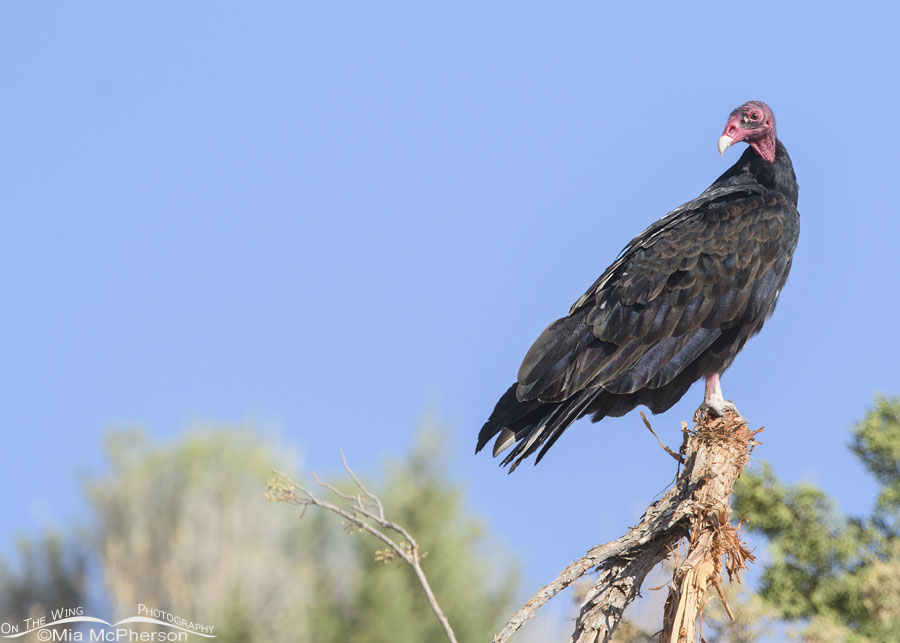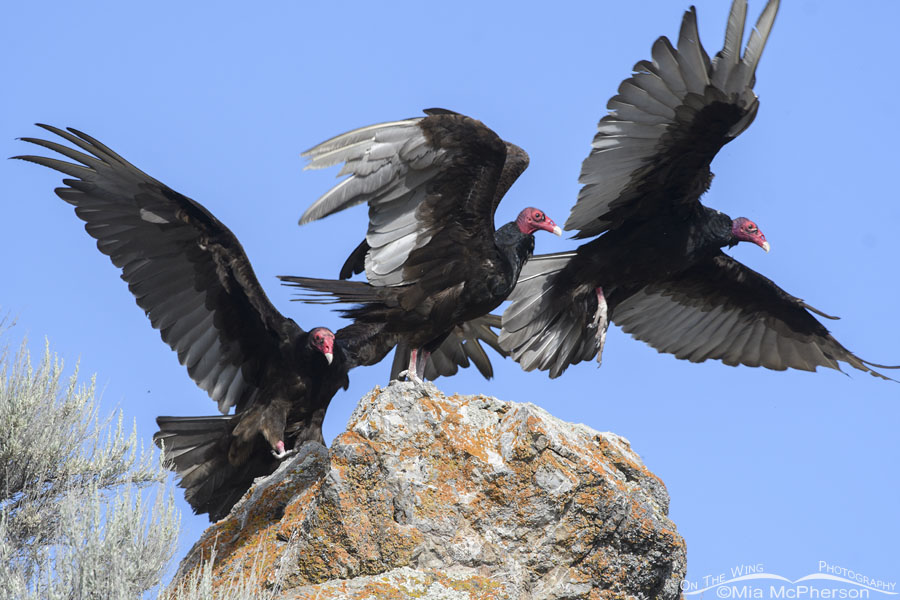 Turkey Vulture on a juniper stump
Turkey Vulture on a juniper stump
The first Saturday of September is International Vulture Awareness Day which is a day to bring awareness to these birds that face a range of threats.
Turkey and Black Vulture populations in North America are relatively stable although there here have been recent mass die offs of vultures in North America due to Avian flu. California Condors are making a come back with our help and monitoring but are still listed as critically endangered.
The future of Old World vultures is unstable. Many are listed as near threatened, endangered and critically endangered.
- Hooded Vulture Necrosyrtes monachus (Africa) – Critically Endangered
- Indian Vulture Gyps indicus (Asia) – Critically Endangered
- Red-headed Vulture Sarcogyps calvus (Asia) – Critically Endangered
- Rüppell’s Vulture Gyps rueppelli (Africa, (Europe*)) – Critically Endangered
- Slender-billed Vulture Gyps tenuirostris (Asia) – Critically Endangered
- White-backed Vulture Gyps africanus (Africa, (Europe*)) – Critically Endangered
- White-headed Vulture Trigonoceps occipitalis (Africa) – Critically Endangered
- White-rumped Vulture Gyps bengalensis (Asia) – Critically Endangered
- Cape Vulture Gyps coprotheres (Africa) – Endangered
- Egyptian Vulture Neophron percnopterus (Europe, Asia, Africa) – Endangered
- Lappet-faced Vulture Torgos tracheliotos (Africa, Asia) – Endangered
- Bearded Vulture Gypaetus barbatus (Europe, Asia, Africa) – Near Threatened
- Cinereous Vulture Aegypius monachus (Europe, Asia, (Africa*)) – Near Threatened
- Himalayan Griffon Gyps himalayensis (Asia) – Near Threatened
- Griffon Vulture Gyps fulvus (Europe, Asia, Africa) – Least Concern
 Three Turkey Vultures and a lichen covered rock
Three Turkey Vultures and a lichen covered rock
Old World Vultures face threats of poisonings, habitat loss and collisions with wind energy infrastructures. Our current climate crisis also puts them at risk.
All vultures are part of Nature’s clean up crew.
They help stop the spread of disease in wild and domesticated animals and reduce pathogenic risks to humans. They are good for the environment which in turn is good for us.
We can help them by sharing information on the good that they do for the planet. Not just on International Vulture Awareness Day but every day of the year. They need our help.
Life is good. Together we can make it better.
Mia
Click here to view more of my Turkey Vulture photos plus facts and information about this species.


How I wish that we had vultures…
A very interesting and distressing narrative. I had no idea that vultures, in general, were so endangered and that many of them are critically at risk. What a pity. Thanks for the heads-up Mia.
They must like that rock perch, I have photos of them there also. I think vultures are wonderful and I am so sad that Avian Influenza kills turkey vultures, they are so hardy to everything else. I fear the other vultures of the world will also be susceptible and threaten the species even more.
Love these little guys!